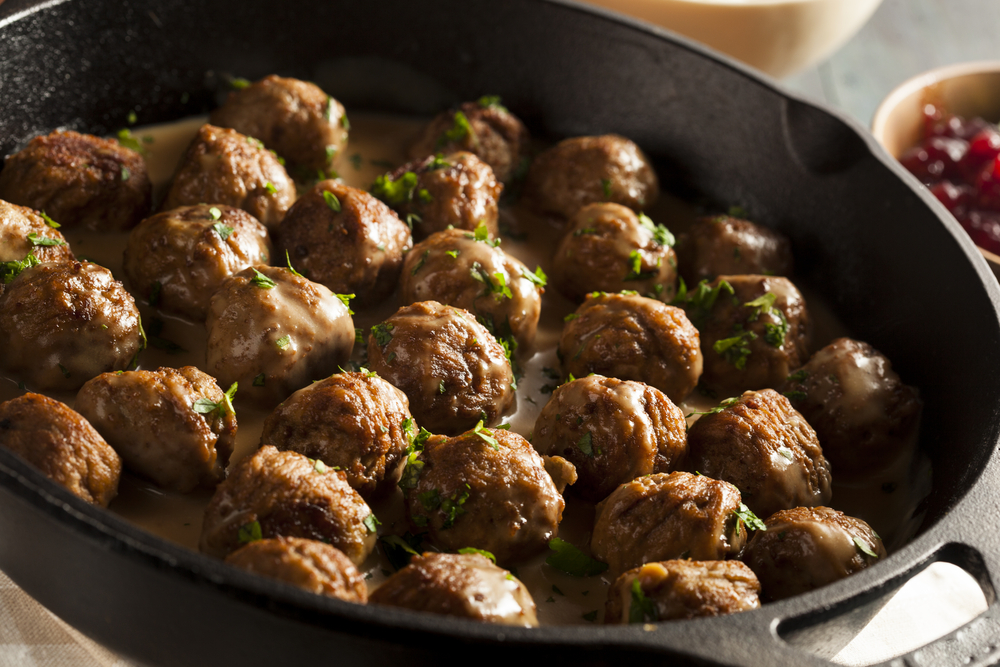Reheating food can be a daunting task, especially when you’re trying to preserve the taste and texture of your meal.
Fortunately, the Instant Pot can make reheating food a breeze. Whether you’re reheating leftovers or preparing a meal in advance, the Instant Pot can save you time and effort while retaining the quality of your food.
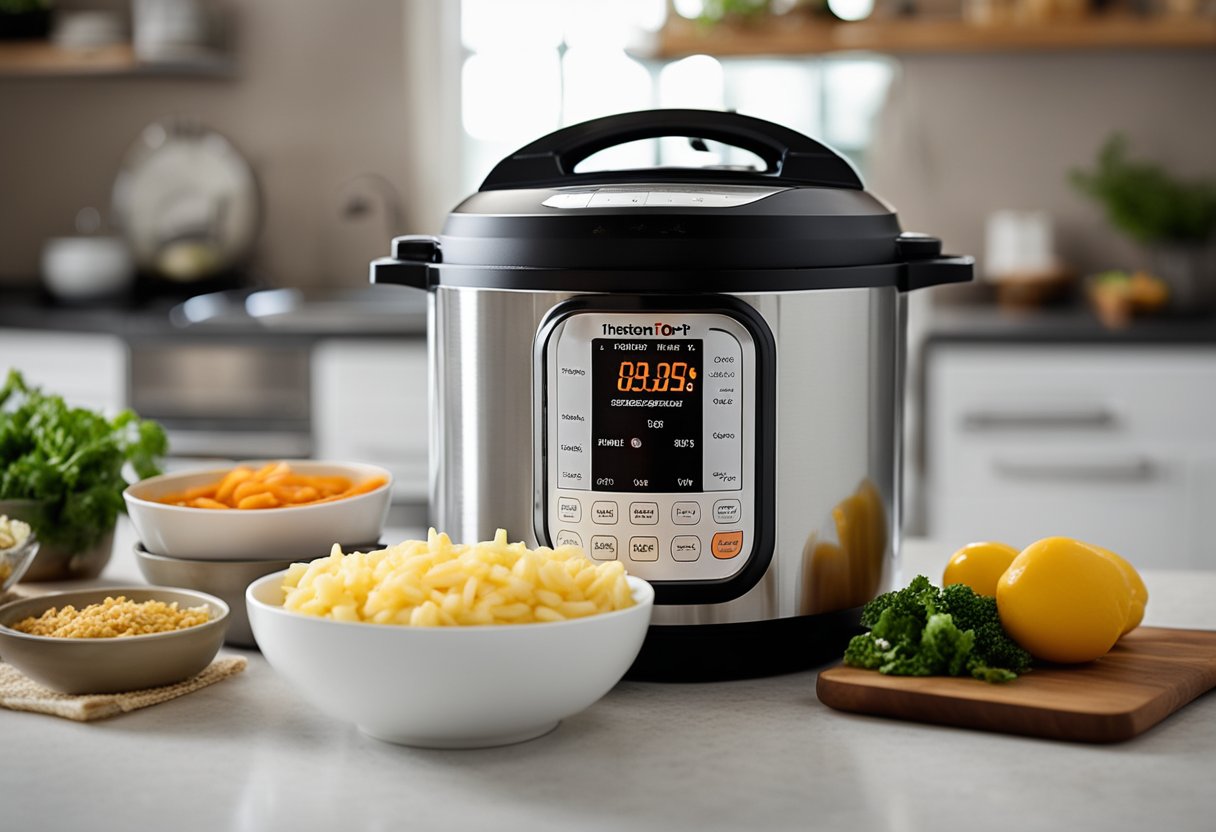
To get the most out of your Instant Pot, it’s important to understand how it works and how to prepare your food for reheating.
By following a few simple steps, you can ensure that your food is evenly reheated and retains its original flavor and texture. From adjusting cooking times and temperatures to post-reheating tips, there are several techniques you can use to get the best results from your Instant Pot.
Key Takeaways:
- Understanding your Instant Pot is key to reheating food effectively.
- Proper preparation, including adding liquids and covering the food, is crucial to evenly reheating your meal.
- Adjusting cooking times and temperatures can help you get the best results from your Instant Pot.
Understanding Your Instant Pot
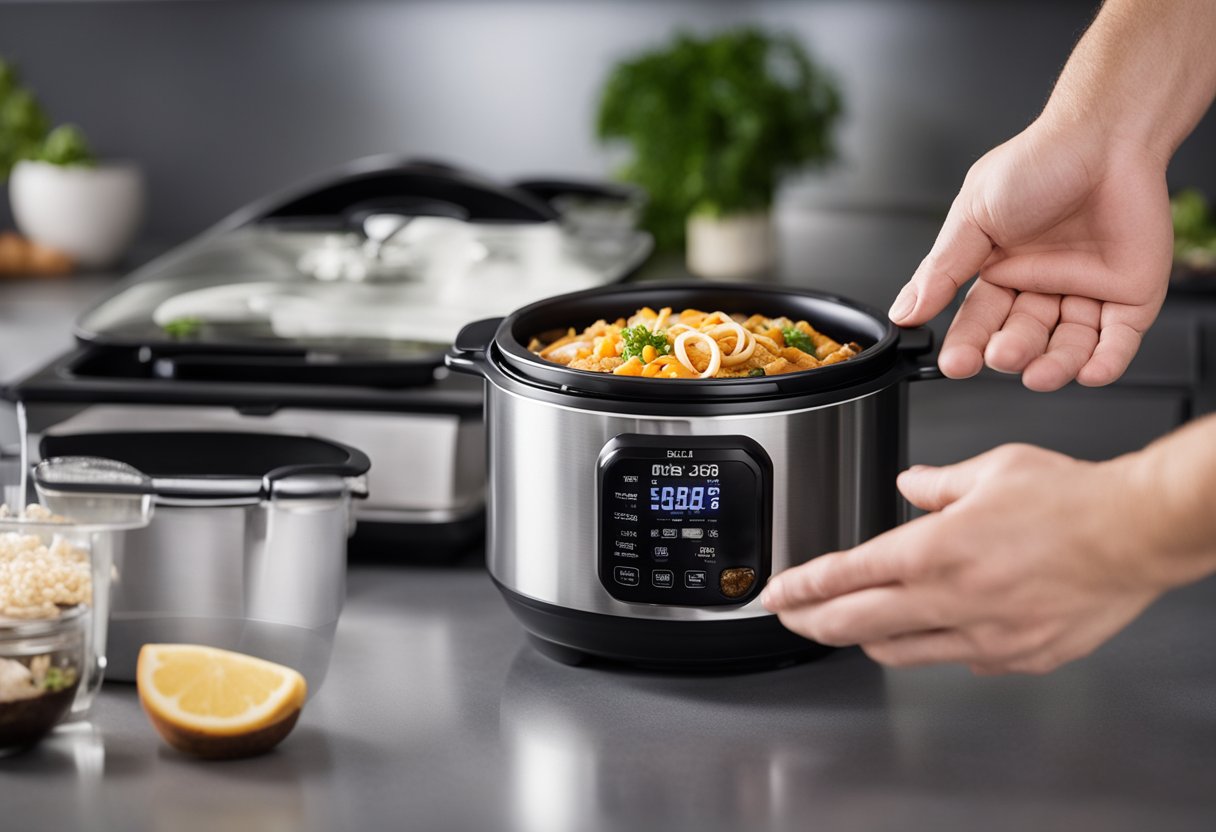
As someone who loves to cook, I find that the Instant Pot is an indispensable tool in my kitchen. With its ability to pressure cook, sauté, steam, and slow cook, it’s an all-in-one appliance that can save you time and effort in the kitchen.
In this section, I’ll go over the basics of the Instant Pot, its safety features, and the accessories and tools you’ll need to get the most out of it.
Instant Pot Basics
The Instant Pot is a type of electric pressure cooker that uses steam to cook food quickly. It has a manual setting that allows you to set the cooking time and pressure level, as well as preset programs for cooking specific types of food, like rice, soup, and yogurt.
It also has a sauté function that lets you brown meat and vegetables before pressure cooking them.
To use the Instant Pot, you’ll need to add liquid to the pot (usually water or broth), place your food on a trivet or steamer basket, and then seal the lid.
The Instant Pot will then pressurize and start cooking your food. Once the cooking time is up, you can release the pressure manually or let it release naturally.
Safety Features
The Instant Pot has several safety features that make it safe to use in your kitchen. It has a lid that locks in place and a pressure release valve that prevents the lid from being opened until the pressure has been released.
It also has a safety mechanism that prevents the pressure from building up too high, which can be dangerous.
When using the Instant Pot, it’s important to follow the manufacturer’s instructions and never overfill the pot. You should also make sure that the vents are clear and that the silicone lid is properly in place.
Accessories and Tools
To get the most out of your Instant Pot, you’ll need a few accessories and tools. A trivet or steamer basket is essential for keeping your food off the bottom of the pot and allowing steam to circulate around it.
A silicone lid is also useful for storing leftovers in the pot or for reheating food without having to transfer it to another container.
Other accessories that can be useful include a glass lid (for slow cooking), a springform pan (for making cheesecakes), and a spare sealing ring (to replace the original one when it gets worn out).
In summary, the Instant Pot is a versatile and safe tool that can help you cook a wide variety of foods quickly and easily.
By understanding its basic functions, safety features, and accessories, you’ll be able to get the most out of your Instant Pot and create delicious meals with ease.
Preparation for Reheating Food
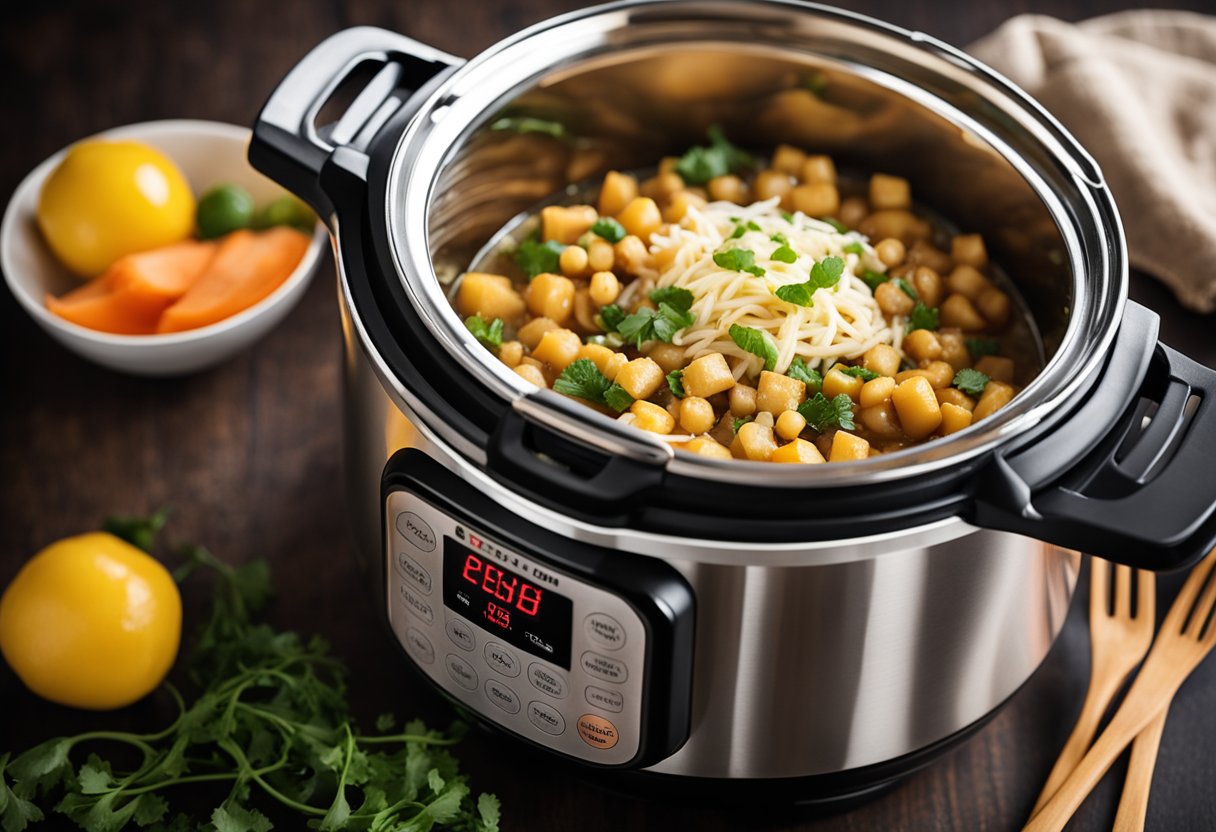
Before reheating food in the Instant Pot, it is important to prepare the food and the containers properly. Here are some tips to ensure the best results:
Selecting Containers
When selecting containers for reheating food in the Instant Pot, it is important to choose heatproof containers that are safe for pressure cooking.
Glass, ceramic, and stainless steel containers are good options. Avoid using plastic containers, as they may melt or release harmful chemicals when exposed to high heat.
Arranging Food
When arranging food in the Instant Pot for reheating, it is important to ensure that the food is evenly distributed and not overcrowded.
Overcrowding can prevent the food from reheating properly. If you have a large amount of food to reheat, consider using the pot-in-pot method. This involves placing a smaller container inside the Instant Pot’s inner pot.
Adding Liquids
Adding liquids can help prevent the food from drying out and sticking to the bottom of the pot. Water, broth, or other liquids can be added to the bottom of the Instant Pot before placing the food inside.
Alternatively, you can add the liquid directly to the food before reheating. Be sure to use enough liquid to cover the food, but not so much that it becomes soupy.
Covering with Foil
When reheating food in the Instant Pot, covering the container with aluminum foil can help prevent moisture from escaping and promote even heating.
Be sure to cover the container tightly with foil, but leave a small vent for steam to escape. This will prevent the pressure from building up inside the container and potentially causing an explosion.
By following these tips for preparing food for reheating in the Instant Pot, you can ensure that your leftovers come out hot, moist, and delicious every time.
Reheating Techniques
When it comes to reheating food in the Instant Pot, there are a few different techniques you can use depending on what you’re reheating and how you want it to turn out.
In this section, I’ll go over three different methods: using the steam function, the pot in pot method, and the slow cook function.
Using the Steam Function
The steam function is one of the easiest ways to reheat food in the Instant Pot. To use this method, simply pour some water into the bottom of the Instant Pot and place your food on the trivet.
Then, select the steam function and set the timer for the appropriate amount of time. This method is great for reheating things like vegetables, rice, and pasta.
Pot in Pot Method
The pot in pot method is another great way to reheat food in the Instant Pot. This method involves placing your food in a separate container inside the Instant Pot, which allows you to reheat multiple items at once.
To use this method, simply place your food in a heat-safe container and place it on the trivet inside the Instant Pot. Then, add some water to the bottom of the Instant Pot and select the pressure cook function.
Set the timer for the appropriate amount of time and let the Instant Pot do the rest. This method is great for reheating leftovers and frozen foods.
Slow Cook Function
The slow cook function is a great way to reheat food in the Instant Pot if you want to take your time and let the flavors meld together.
To use this method, simply place your food in the Instant Pot and select the slow cook button. Set the timer for the appropriate amount of time and let the Instant Pot do the rest. This method is great for reheating soups, stews, and chili.
Overall, the Instant Pot is a versatile appliance that can be used for a variety of cooking tasks, including reheating food. Whether you’re using the steam function, the pot in pot method, or the slow cook function, the Instant Pot makes it easy to reheat your favorite foods quickly and efficiently.
Adjusting Cooking Times and Temperatures
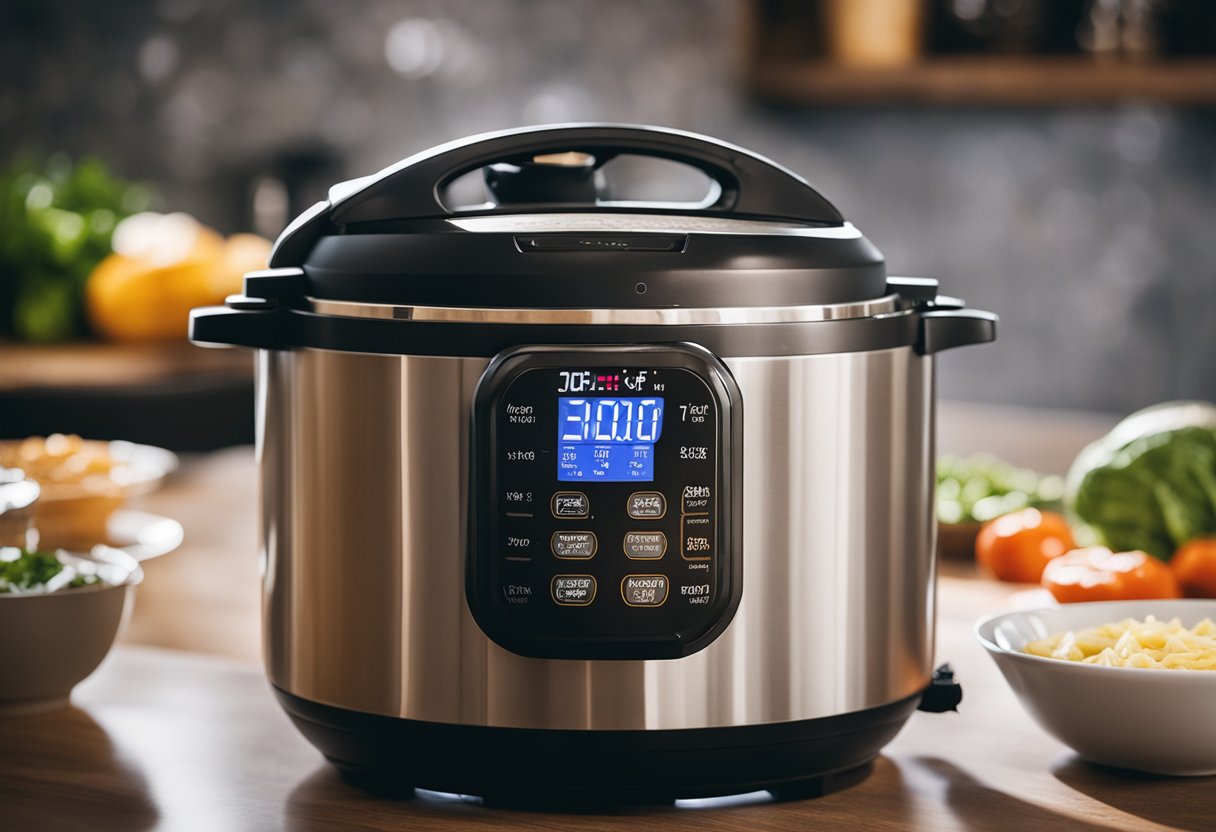
Determining Cook Times
When reheating food in an Instant Pot, it’s important to adjust the cooking time based on the type of food you’re reheating. For example, soups and stews may take longer to reheat than rice or vegetables.
s a general rule, most foods can be reheated in 5-10 minutes on the manual function. However, it’s always a good idea to consult the Instant Pot manual or recipe book for specific cook times.
Another factor to consider when determining cook times is the amount of food you’re reheating. If you’re reheating a large amount of food, it may take longer to heat through than a smaller portion.
In this case, you may need to add a few extra minutes to the cook time to ensure that the food is heated through evenly.
Setting the Temperature
In addition to adjusting the cook time, you may also need to adjust the temperature when reheating food in an Instant Pot. The sauté button can be used to heat up the Instant Pot quickly before switching to the manual function to reheat the food.
This is especially useful for reheating soups and stews, as it allows you to bring the liquid to a boil before reducing the temperature to the manual function.
Alternatively, if you’re reheating a delicate food like fish or vegetables, you may want to use a lower temperature to prevent overcooking. In this case, you can use the manual function to set the temperature to a lower setting and adjust the cook time accordingly.
Finally, the keep warm mode can be used to keep food warm after it has been reheated. This is especially useful if you’re reheating food in advance of a meal and want to keep it warm until you’re ready to serve.
However, it’s important to note that the keep warm mode should not be used for extended periods of time, as it can cause the food to dry out or become overcooked.
Post-Reheating Tips

After reheating your food in the Instant Pot, there are a few things you can do to ensure that it tastes just as good as it did the first time around.
Here are some tips to keep in mind:
Ensuring Even Heat Distribution
To ensure that your food is evenly heated, it’s important to stir it occasionally during the reheating process. This will help distribute the heat evenly throughout the food, preventing any cold spots from forming. You can use tongs or oven mitts to stir the food, depending on what’s easiest for you.
Storing Reheated Food
If you have leftovers after reheating your food in the Instant Pot, it’s important to store them properly. According to the USDA, you should refrigerate any leftover food within two hours of reheating it. You can store the food in an airtight container in the fridge for up to four days.
To maintain the quality of the reheated food, you can also store it in the freezer. This is especially helpful if you have a large batch of leftovers that you won’t be able to finish within a few days.
Just make sure to label the container with the date and contents so that you can easily identify it later.
Remember that reheating food can affect its nutrient content and moisture level. To minimize nutrient loss, it’s best to reheat the food on a low heat setting. If the food is too dry after reheating, you can add a small amount of liquid, such as broth or water, to help restore some of the moisture.
By following these tips, you can ensure that your reheated food tastes just as good as it did the first time around.
Frequently Asked Questions
What is the best method to reheat chili without drying it out in an Instant Pot?
When reheating chili in an Instant Pot, it’s important to add a small amount of liquid to prevent it from drying out. The easiest way to do this is to add a cup of water or broth to the Instant Pot and then place the chili in a heat-safe container on top of a trivet.
Close the lid and set the Instant Pot to manual high pressure for 5 minutes. Once the cooking cycle is complete, use the quick release to release any remaining pressure and carefully remove the container of chili.
Can you reheat a steak to maintain its tenderness using an Instant Pot?
While an Instant Pot is great for cooking steak, it’s not the best tool for reheating it. Reheating steak in an Instant Pot can cause it to become overcooked and tough. Instead, it’s best to reheat steak using a low and slow method, such as in a low-temperature oven or on the stovetop.
What are the steps for reheating a pot roast in an Instant Pot to preserve moisture?
To reheat a pot roast in an Instant Pot and preserve its moisture, start by adding a cup of beef broth or water to the Instant Pot. Place the pot roast in a heat-safe container on top of a trivet and close the lid.
Set the Instant Pot to manual high pressure for 5 minutes and use the quick release to release any remaining pressure. Carefully remove the container of pot roast and serve.
Is it possible to use an Instant Pot to warm up chicken breast without overcooking?
Yes, it is possible to warm up chicken breast in an Instant Pot without overcooking it. Start by adding a cup of water or broth to the Instant Pot and then place the chicken in a heat-safe container on top of a trivet.
Close the lid and set the Instant Pot to manual high pressure for 3 minutes. Once the cooking cycle is complete, use the quick release to release any remaining pressure and carefully remove the container of chicken.
How do you safely reheat frozen meals in an Instant Pot?
To safely reheat frozen meals in an Instant Pot, start by adding a cup of water or broth to the Instant Pot. Place the frozen meal in a heat-safe container on top of a trivet and close the lid. Set the Instant Pot to manual high pressure for the recommended time for the specific meal.
Once the cooking cycle is complete, use the quick release to release any remaining pressure and carefully remove the container of food.
What’s the process for reheating a pork roast in an Instant Pot while keeping it juicy?
To reheat a pork roast in an Instant Pot while keeping it juicy, start by adding a cup of water or broth to the Instant Pot. Place the pork roast in a heat-safe container on top of a trivet and close the lid.
Set the Instant Pot to manual high pressure for 5 minutes and use the quick release to release any remaining pressure. Carefully remove the container of pork roast and serve.






